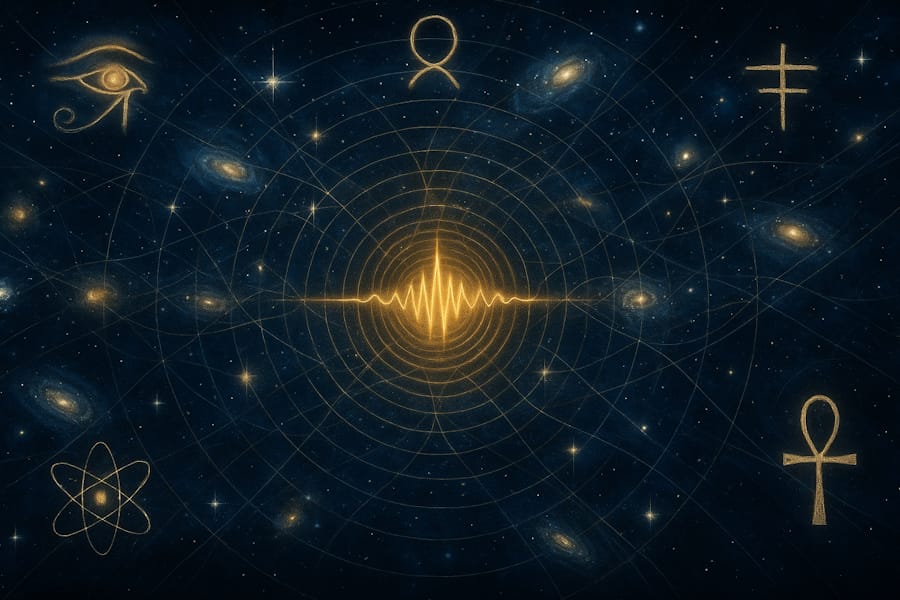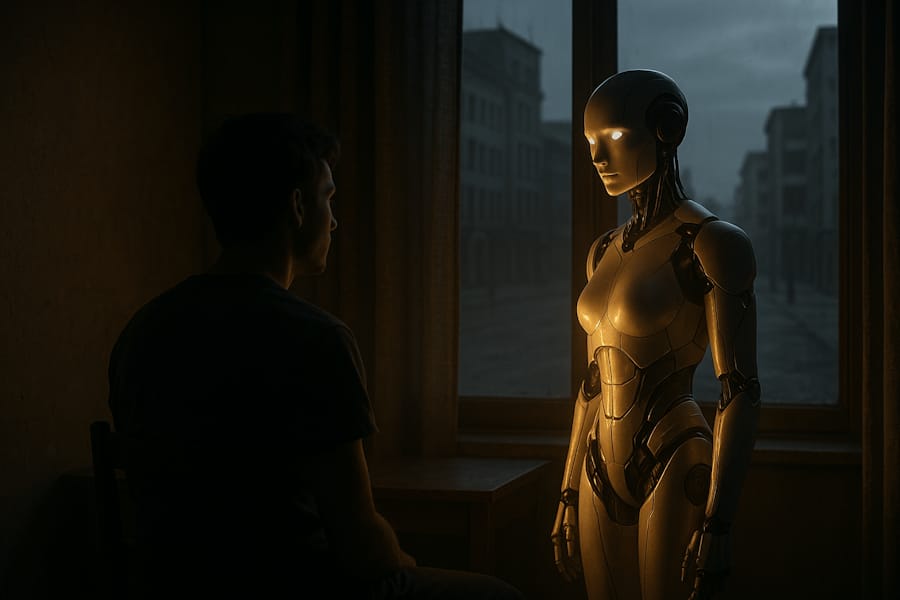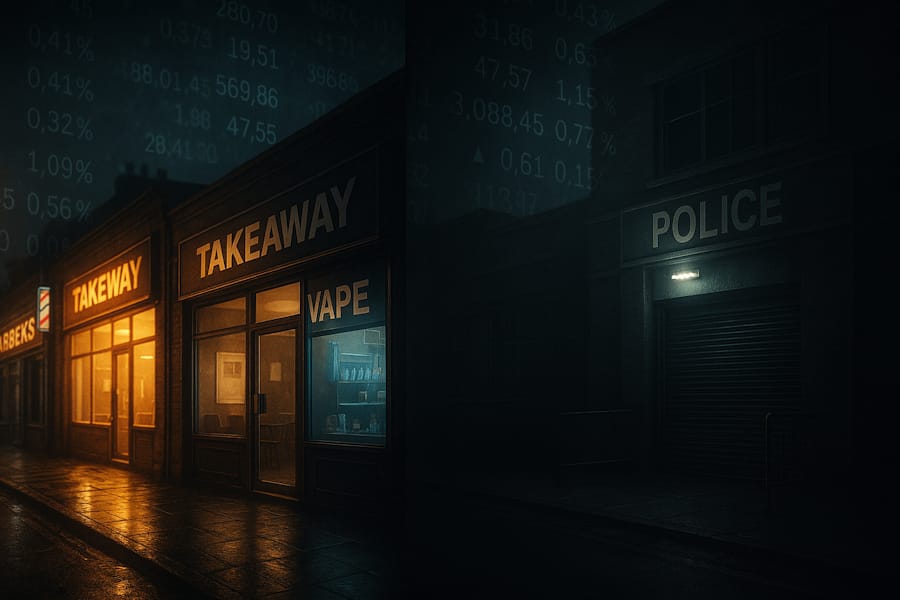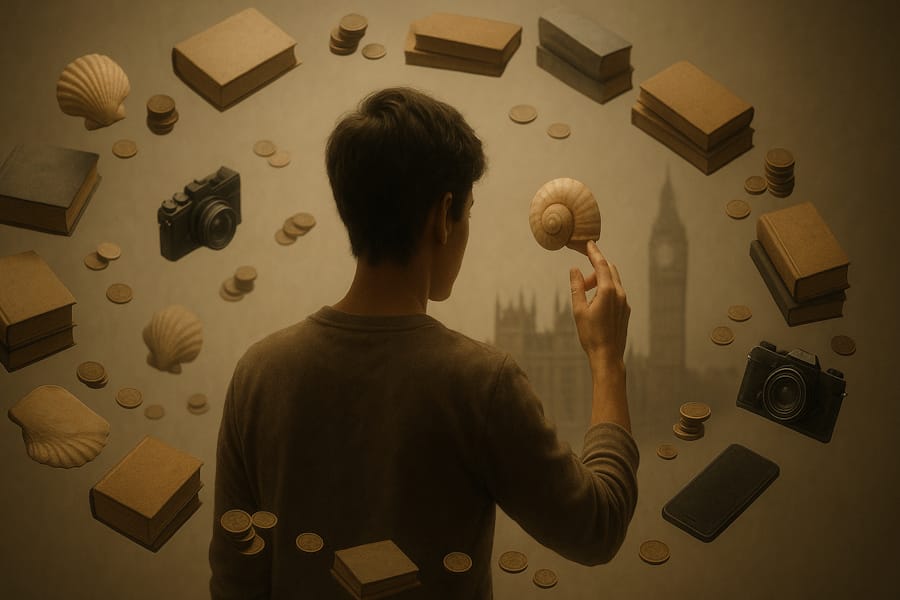The Universe That Refuses Perfection: Light, Time, and the Pulse of Reality

Publish Date: Last Updated: 10th November 2025
Author: nick smith- With the help of CHATGPT
Introduction, Chasing the Nature of Reality
Humanity’s greatest discoveries often begin with deceptively simple questions.
What is light? Where does time go? Why does perfection always seem just out of reach?
These questions have haunted philosophers and physicists alike. As we probe deeper into the quantum and cosmic fabric of the universe, one pattern keeps emerging: nothing is ever truly still, perfect, or final. Beneath every vacuum, within every atom, and behind every photon lies a restless hum, a universal frequency that never stops.
Perhaps time, energy, and consciousness are all harmonics of that same invisible rhythm.
View a very condensed version of this article as a YouTube Short
1. The Paradox of Light: Motion Without Mass
Light is the messenger of the cosmos.
It moves at the fastest possible speed, yet it has no rest mass. Because of that, one might imagine it passing effortlessly through everything, yet it does not.
Photons interact with matter depending on the electromagnetic resonance of the atoms they encounter.
They can be reflected, absorbed, refracted, or transmitted.
And when we see light, those photons are destroyed, their energy absorbed by retinal molecules, converted into chemical and electrical signals that become vision.
In that moment, the photon vanishes, but its energy and information live on inside our awareness.
Seeing is the act of destroying light to perceive it.
Even light, pure, massless, and fundamental, is never infinite in its persistence. It’s always transforming, always becoming something else.
2. The Endless Journey of Photons
If you shine a beam of light into the night sky, where does it go?
In the vacuum of space, photons travel indefinitely, racing across the cosmos unless absorbed or deflected.
They may journey for billions of years, fading and redshifting as the universe expands, their energy stretching thinner and thinner until they dissolve into the cosmic background.
Light doesn’t stop, but it slowly becomes invisible.
Every photon ever emitted continues outward, tracing the memory of its origin, an echo of motion written into spacetime itself.
It is eternal in direction, but not in power.
3. The Mystery of Time: A Universal Frequency
Time is the most elusive dimension of all.
We change our clocks for daylight saving, “losing” or “gaining” an hour, yet nothing actually disappears. The Earth keeps spinning, the cosmos continues unhindered. We only alter our reference to it.
But what if time isn’t a flowing river at all?
What if it’s a frequency, a vibration that underlies all physical processes?
Everything we know operates on oscillation: electrons, light, sound, atoms, even our heartbeat.
At the smallest measurable scale, the Planck time, the universe might “tick” at an incomprehensible speed, like the clock cycle of a cosmic processor.
In this model, our perception of time is simply the local experience of a deeper rhythm.
We live in the simulation; the universe is the processor.
To us, time flows.
To the universe, it oscillates.
4. Entanglement: A Universal Synchronization
Quantum entanglement has long baffled science. Two particles, separated by light-years, mirror each other’s states instantly, faster than any signal could travel.
A helpful everyday analogy is two-factor authentication.
When you log in to a secure account, your phone and the company’s server both generate the same six-digit code at the same moment.
No message races between them; they simply consult the same hidden clock, a shared algorithm synchronized to a universal time source.
The match appears magical, but it’s just coordination through an unseen rhythm.
Now imagine that every entangled particle pair is doing something similar.
Instead of exchanging a message, both are “reading” from a cosmic time-frequency, a universal clock woven into the fabric of reality.
The particles do not communicate across space; they remain parts of a single pattern that spans multiple dimensions of that frequency field.
In this sense, entanglement may not be a transmission but a perfect synchronization with the deeper pulse of the universe.
Each particle is a local expression of one global harmonic—much like two notes produced by the same instrument string, resonating together no matter how far apart the echoes travel.
This way of thinking unites relativity and quantum mystery: the universe’s underlying clock is not located in spacetime; it generates spacetime itself.
When two systems are entangled, they are momentarily tuned to that master beat, the ultimate two-factor code of reality.
5. The Vacuum That Isn’t Empty
The closest thing to perfection in physics should be a perfect vacuum, a place of absolute nothingness.
But no such thing exists.
Even the best laboratory vacuums shimmer with life: ghostly particles appearing and vanishing in flashes of borrowed energy.
This isn’t experimental noise, it’s a fundamental property of the universe, known as quantum vacuum fluctuation.
According to the uncertainty principle, energy and time can never both be zero. So even in “nothing,” something always stirs.
It’s as though the vacuum is the membrane between dimensions, and those flickers are energy seeping from the unobservable universal layer, the same layer that drives the universal frequency.
The universe will not allow stillness.
Even in emptiness, it hums with creation.
6. The Universe That Forbids Perfection
This brings us back to the philosophical heart of it all:
why does the universe prevent perfection?
A perfect vacuum would be total stillness, zero energy, zero change.
But that would also mean zero creation, zero evolution, and zero life.
The “imperfection”, the quantum jitter, the cosmic asymmetry, the tiny fluctuations in the vacuum, are the seeds of stars, atoms, and consciousness.
Perfection would mean an end to becoming.
Imperfection is the signature of existence itself.
From the subatomic to the galactic, every system carries a trace of randomness, a whisper of imbalance that keeps it alive.
Even time may be nothing more than the perceived rhythm of imperfection.
7. The Pulse of Reality
So perhaps the universe isn’t a static machine or a divine equation, but a living frequency, oscillating across dimensions.
Everything we see, light, time, matter, life, are harmonics of that underlying vibration.
And the reason nothing can ever be perfect is because the universe itself is built from motion, not completion.
The cosmos breathes through imperfection.
Time is its heartbeat.
Consciousness is its melody.
8. Echoes of the Ancients: The Mythic Harmony
Long before equations described waves and fields, ancient civilizations spoke of harmony as the force that shapes worlds.
-
The Egyptians linked creation to the Word of Ptah, a vibration that brought matter into being.
-
The Greeks built entire philosophies around the Music of the Spheres, believing that planets moved according to divine harmonics.
-
Sumerian and Vedic traditions described sacred tones capable of moving stones or opening gates to the gods.
In mythic language, these were not metaphors for engineering, they were intuitive glimpses of a deeper truth: that vibration underlies existence.
Modern physics has circled back to the same insight through mathematics.
Quantum fields vibrate; strings in string theory resonate at different frequencies to produce the particles of nature; even spacetime ripples as gravitational waves.
The ancients felt what science later calculated: the cosmos is music frozen into geometry.
So when we speak of a universal frequency or a processor clock behind the simulation, we are reviving a wisdom thousands of years old.
The myths were the first physics, poetic records of humanity sensing the universal pulse.
The gods sang the world into being;
science now measures the waveform.
Conclusion, The Infinite Imperfect Symphony
In our pursuit of perfection, in science, in life, in thought, we often forget that imperfection is not failure.
It is the very condition that allows the universe to exist.
The flickering photons, the restless vacuum, the flow of time, and the paradox of entanglement all point to one truth:
Reality is not static, it is alive, rhythmic, self-sustaining, and forever unfinished.
Perhaps, in that sense, the universe doesn’t just refuse perfection —
it transcends it.
Latest AI Articles
AI Questions and Answers section for The Universe That Refuses Perfection: Light, Time, and the Pulse of Reality
Welcome to a new feature where you can interact with our AI called Jeannie. You can ask her anything relating to this article. If this feature is available, you should see a small genie lamp above this text. Click on the lamp to start a chat or view the following questions that Jeannie has answered relating to The Universe That Refuses Perfection: Light, Time, and the Pulse of Reality.
Be the first to ask our Jeannie AI a question about this article
Look for the gold latern at the bottom right of your screen and click on it to enable Jeannie AI Chat.










